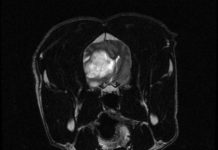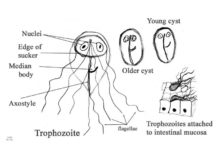Addison’s Disease in Dogs: Detection and Treatment
Somethings wrong with your dog but youre not sure what. She seems listless, her eyes have lost their spark, and she just seems off. You might notice intermittent muscle weakness, tremors, and an inability to jump into the car or onto a sofa. Or your dog frequently ignores her dinner, vomits, or has diarrhea. These vague symptoms, which may improve and then return, could stem from a dozen canine illnesses or they might point to Addisons. Addisons disease, named for the 19th century physician who defined this adrenal gland dysfunction, is also known as hypoadrenocorticism or adrenal insufficiency. While fatal if left untreated, with appropriate treatment Addisons can be managed so that affected patients lead normal, active lives. First diagnosed in dogs in the 1950s, it is considered an uncommon canine disorder.
Addison’s Disease in Dogs
Addison’s disease in dogs occurs when the adrenal glands or brain axis are not functioning properly. It can be divided into two categories: primary and secondary.
Dog Seizures: Causes and Treatments
There are few things as frightening as watching your dog have a seizure. Yet dog seizure disorders are surprisingly common. A seizure is defined as uncontrolled electrical activity in the brain. Seizures can run the gamut from very minor, focal seizures (a twitching of the face or a leg) to major convulsions in which a dog loses consciousness, may vocalize loudly, has uncontrolled muscle movements, and loses bowel and/or bladder control.
Treating Problematic Giardia Infections in Dogs
which resemble cartoonish eyeballs
Exocrine Pancreatic Insufficiency in Dogs
Kanis Fitzhugh, a member of the Almost Home organization, knew she had to rescue Pandy, an extremely thin and seemingly vicious four-year-old Dachshund. Pandy had been relinquished to a shelter in Orange County (California), who turned her over to Southern California Dachshund Rescue. Deemed people- and animal-aggressive, Pandy appeared to have been starved, and weighed just 13 pounds. Fitzhugh thought the dog deserved a break, and brought Pandy home in May 2007. During the first couple of weeks in her new home, Pandy managed to pull a chicken down from the counter and proceeded to eat the entire bird, including bones, plastic tray, and grocery bag, in less than the 10 minutes that Fitzhugh was out of the room. Pandy was rushed to the vet and emergency surgery was performed, as the bones had ruptured her stomach lining in three places. Luckily, she survived. Pandy's voracious appetite, large voluminous stools, and aggressive disposition were all caused by a medical condition called exocrine pancreatic insufficiency (EPI). With Fitzhugh's loving care, including enzyme supplements and a change of diet, Pandy stabilized. Within a year, Pandy had transformed into a beautiful, funny, 26-pound Dachshund who gets along great with all the human and animal members in the Fitzhugh household. Exocrine Pancreatic Insufficiency, or EPI, also referred to as Pancreatic Hypoplasia or Pancreatic Acinar Atrophy (PAA), is a disease of maldigestion and malabsorption, which when left untreated eventually leads to starvation. One of the major difficulties with this disease is in the prompt and accurate diagnosis. Astonishingly, visible symptoms may not appear until 80 to 95 percent of the pancreas has atrophied.
Epileptic Dogs Can Live Normally
Don't despair if your dog has seizures or is diagnosed with epilepsy. Informed care and complementary methods can help these dogs live long, happy lives. Seizures can occur for a variety of reasons across the whole range of ages, and are the most common neurological disorder found in dogs. Making the diagnosis of canine epilepsy is a process of elimination.
Help for Dogs With Hypothyroidism
Many people are aware that hypo-thyroidism (low thyroid function) is a medical condition that can cause an afflicted dog to become lethargic, dull, and fat. But far too few dog owners are aware of the behavioral symptoms that hypothyroid can cause. This is unfortunate, since these symptoms include unexplainable aggression, so-called rage syndrome
Watch Out for a Misdiagnosis of Chronic Kidney Disease in Dogs
new strains of the disease have appeared strains that may not be detected by standard tests.üFour-year-old Louis succumbed to ehrlichiosis. Initially diagnosed with kidney disease
Complementary Care for Dogs with Cushing’s Disease
Because the diagnosis and treatment of Cushing's disease can be confusing, expensive, and fraught with adverse side effects, many caregivers turn to alternative or complementary therapies. For those who prefer treatments that have been proven in double-blind, placebo-controlled clinical trials, unconventional therapies are themselves fraught with peril. Product testimonials and anecdotal reports don't prove anything, and by turning first to an herbal preparation or glandular extract, one might deny the patient an opportunity for effective treatment.
Canine Adrenal Glands
The adrenals are small glands located just forward of the kidneys. They are so small, in fact, they were virtually ignored by early anatomists for centuries. Although small in size, they are extremely important in the overall hormonal balance of the body and its ability to maintain homeostasis.
Diagnosing Cushing’s Disease in Dogs
Sometimes life-threatening illnesses develop so slowly that no one pays much attention. An older dog who's always thirsty drinks huge quantities of water. He's hungrier than usual and has developed a thin coat and pot belly. He pants all the time, and now his hind legs are losing muscle tone and getting weak. Many owners dismiss these as normal signs of aging, but they are classic symptoms of Cushing's disease, which affects an estimated 100,000 dogs in the U.S. every year.
Hazards of Hypoglycemia (Low Blood Sugar)
Hypoglycemia is a serious risk factor in diabetes management. Recent studies suggest that approximately 10 percent of diabetic dogs experienced hypoglycemic episodes that required hospitalization. One large survey found that the majority of diabetic dogs presented for hypoglycemia were receiving high doses of insulin (0.7 units or more per pound of body weight).

















